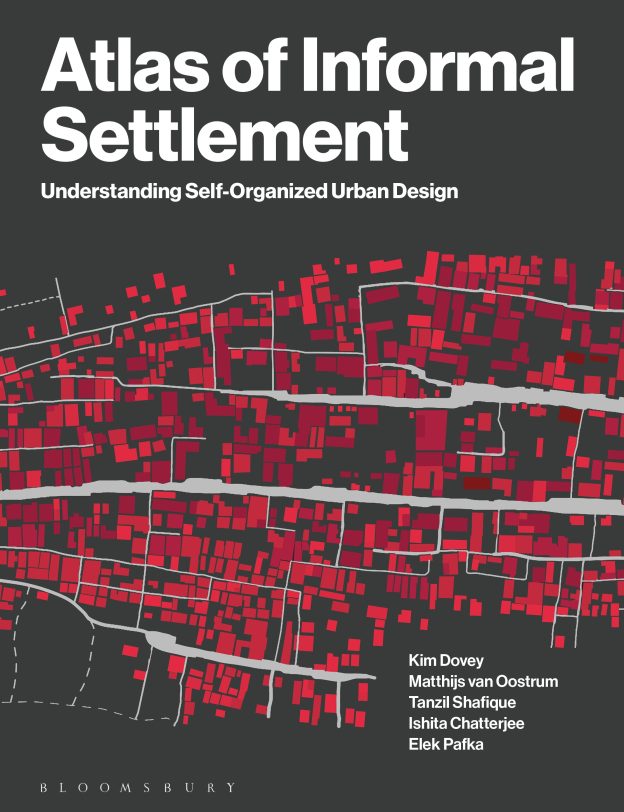Informality exists in every city, but today the term is used mainly to characterize whole settlements in what is now often called the global South. Depending on how defined, such settlements currently house about a fifth of humanity. They have received growing attention in recent years, but this has typically been in a case-by-case fashion that inhibits comparison. Hence, although limited in scope to a strictly morphological analysis, the Atlas of Informal Settlement is one of the most ambitious attempts to date of comparative research.
The authors begin with a plausible and clear statement as to what they mean by ‘informal’. Although such settlements are ‘largely defined as self-organized with the means of production primarily controlled by residents’, they also include places where ‘pirate’ or ‘mafia developers’ are involved (p. 16). The authors also insist that what they provide is ‘neither a celebration … nor a critique’ (p. 12). While plausible (up to a point), they make it clear that the residents of such settlements should be treated with respect and that certain tactics, notably clearance, are wrong.
Led by Kim Dovey, the authors’ purpose is ‘to better understand the morphogenetic logic of informal settlements’ (p. 248). Consequently, they are concerned with physical patterning, notably of streets, of dwelling placement and also of public open space. By ‘logic’, they mean the varied influences that determine those patterns: the physical topography, rate of growth, whether platting follows or precedes construction and so forth. Dovey has been working towards this goal for over a decade and since 2018 as Director of the Informal Urbanism Research Hub at the University of Melbourne, while his co-authors were once a cohort of doctoral students there. Portions of the work have appeared previously—at an exhibition, in book chapters and in journal articles—meaning that the Atlas of Informal Settlement is in effect an expanded summation.
What Dovey and his team have accomplished is impressive. The atlas includes 51 settlements in 33 cities spread across Latin America, Africa, the Middle East and Southeast Asia. All the examples are of a fairly standard ‘walkable’ scale, which means that in many cases they comprise only one part of a larger neighbourhood. These settlements were chosen in part for their diversity; the selection includes some in inner cities as well as many in outer districts, some that are semi-formal in character, while most are largely informal. A key requirement was that they all had to be accessible using Google Earth, and often Street View is used too. Many were also the subject of fieldwork.
In the main section of the atlas—which, incidentally, has been very attractively produced by Bloomsbury—each settlement is presented (typically over three or four pages) in a standardized format with stylized maps and a temporal sequence of satellite images and street-level photographs. The associated text draws on planning studies and/or published research. A subsequent section uses graphs and charts to provide comparative morphological analyses, exploring such themes as the influence of topography and the extent to which growth involves progressive expansion or more dispersed settlement. Comparison is also encouraged at the end of each entry by suggesting several others that share one or more common features. Curiously, no attempt has been made to organize the 51 examples into any particular order, except by country. Even more curiously, the cross-referencing is asymmetrical: at the end of the first entry, ‘C1’, we are pointed to seven other cases, but none of these point back to C1. Perhaps the goal is to encourage us to explore.
Dovey et al. are very clear about the limits of what they have done, conceding that much of what is in the book is ‘not new knowledge’ (p. 281). Again, the Atlas of Informal Settlement is ‘not a study of sociology, politics, economics, land tenure, health, sanitation, governance or community organization’ (p. 21). Nor does it offer ‘a set of recipes for upgrading’ (p. 21). Many readers, then, may wonder: what is the point? Helpfully (if somewhat belatedly), the authors address this ‘so what?’ question on page 281, offering three answers. The first reason is that ‘these are the cities that we have, the cards we have been dealt’ (p. 281) and that, given their number, it behooves us to try to understand them as best we can. Speaking more directly to the value of comparison, a second motive is that we need to challenge the common stereotypes that associate informality (in particular) with slums and anarchy.
The third answer the authors provide is that morphology can offer clues to the method of development. Indeed, this helped guide their selection, based on the assumption that high levels of irregularity indicate that community-based or household-scale initiatives were dominant (p. 285). I have employed this method myself to identify streets, typically suburban, in North America where owner-building was common: clues can be found in the presence (in old insurance atlases or sometimes still on the ground) of small, single-storey frame homes with varied street setbacks. On a much larger scale and in varied contexts, this atlas has an analogous use.
Inspired by the maps and images included here, I would suggest that this work displays a fourth value as well: aesthetics. The diversity of forms Dovey et al. present has its own intrinsic appeal. Indeed, some of them—for example, the sequence of satellite images of El Paraiso de Jicamarca, Lima—are fascinating (p. 84). To the extent that they intrigue others, and might be understood as variations on a global theme, such patterns could inspire more scholars to unearth and compare the causal influences: the sociological, political and economic processes that the authors of this Atlas of Informal Settlement have so carefully bracketed off.
Richard Harris, McMaster University
Kim Dovey, Matthijs van Oostrum, Tanzil Shafique, Ishita Chatterjee and Elek Pafka 2023: Atlas of Informal Settlement: Understanding Self-Organized Urban Design. London: Bloomsbury Urban Design. Cover used with permission of Bloomsbury Urban Design
Views expressed in this section are independent and do not represent the opinion of the editors.

